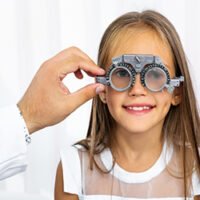
Overview
Squint, also known as strabismus, is a condition where the eyes do not align properly and point in different directions. While one eye may look straight, the other may turn inward, outward, upward, or downward. This misalignment can be constant or intermittent and may affect one or both eyes. Squint is commonly seen in children but can also occur in adults due to nerve damage, injury, or underlying health conditions.
How Its Works?
Squint treatment works by realigning the eyes and improving their ability to work together, depending on the underlying cause and severity of the condition. In cases where the squint is caused by a refractive error, prescription glasses can correct the vision and help align the eyes properly. For children, eye patching is often used to strengthen the weaker eye by covering the stronger one, encouraging the brain to use the affected eye more actively. Eye exercises may also be recommended to improve muscle coordination and control. In some cases, medicated eye drops or ointments are used to relax certain eye muscles. For temporary correction, Botox injections can be given directly into the eye muscles to help adjust alignment. If these non-surgical methods are not effective, eye muscle surgery may be required. During the procedure, the eye muscles are adjusted—either tightened or loosened—to correct the position of the eyes and achieve proper alignment. The overall goal of squint treatment is to improve eye coordination, restore binocular vision, prevent lazy eye (amblyopia), and enhance both visual function and appearance.
 Squint treatment offers several important benefits that improve both vision and quality of life. One of the key advantages is the restoration of proper eye alignment, which helps the eyes work together effectively. This leads to better depth perception and improved binocular vision, allowing the brain to receive a clear and unified image from both eyes. Early treatment, especially in children, can prevent the development of lazy eye (amblyopia), a condition where the brain starts ignoring signals from the misaligned eye. Squint correction also reduces eye strain, headaches, and double vision, making daily tasks like reading and driving more comfortable.
Squint treatment offers several important benefits that improve both vision and quality of life. One of the key advantages is the restoration of proper eye alignment, which helps the eyes work together effectively. This leads to better depth perception and improved binocular vision, allowing the brain to receive a clear and unified image from both eyes. Early treatment, especially in children, can prevent the development of lazy eye (amblyopia), a condition where the brain starts ignoring signals from the misaligned eye. Squint correction also reduces eye strain, headaches, and double vision, making daily tasks like reading and driving more comfortable.